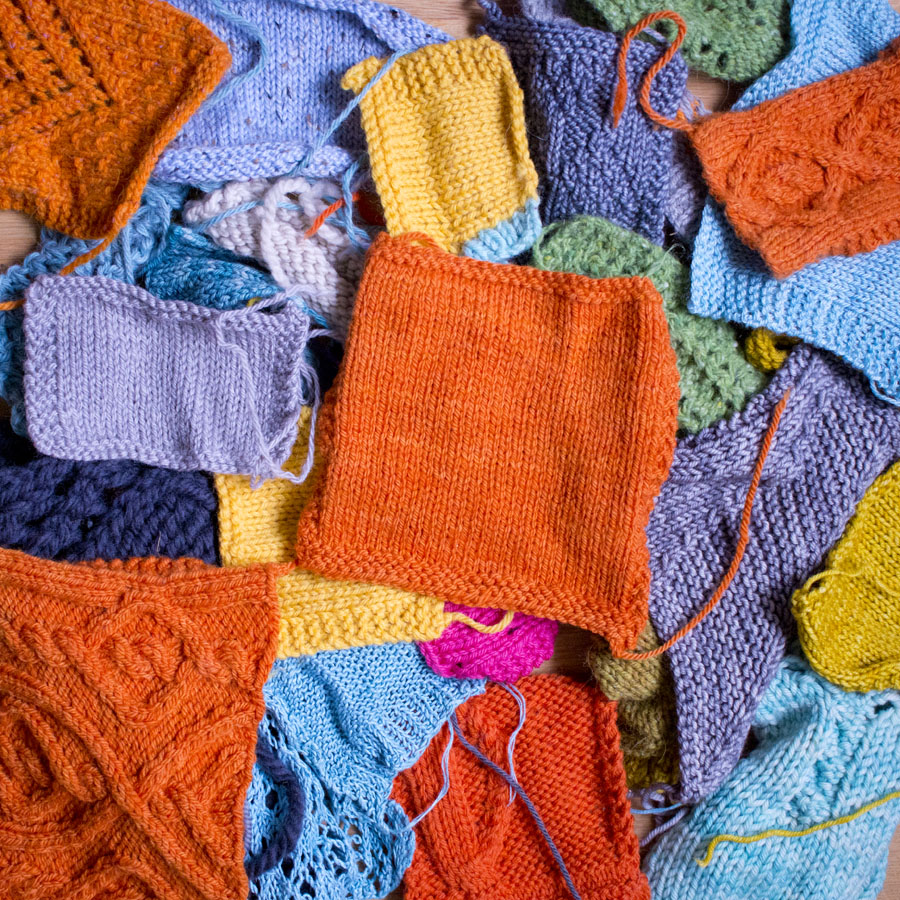
Oh, gauge! It can be a challenge for many knitters, but for a very long time, it was easy for me. Knit or purled, flat or in the round, it was effortless for me to be consistent, and beyond my initial swatches to find the right needles, I didn’t have to give it much thought.
Sometime last year, however, that changed. I noticed it first while working on cropped sample for Adiantum. On the upper back, so subtly that it was invisible from the right side, I was rowing out– creating texture stripes due to my purl stitches and knit stitches being different heights. It was easy to see from the wrong side; the ridges of reverse stockinette fell into neat pairs where the rows were shorter and were divided up by the taller rows. I wasn’t sure what was going on, but other problems with the sweater called for frequent ripping back and re-knitting, and my rowing out cleared up as mysteriously as it started.
My next two sweaters went without any problems, but my most recent sweater is another story! The upper back started fine, but once again, I began to subtly row out. It wasn’t a dramatic difference, and I was close enough to finishing working flat that I continued on to join in the round and knit the body down. I motored along without a worry in the world through the end of the body and first sleeve. I was confident in my historically consistent knitting and confident in my standard measurement, so I never paused to try to piece on, until the finished first sleeve that caught my attention. It looked unusually short for my standard ¾ length, so I put the sweater on and was shocked to find it incredibly short and tight.
I took off my teeny-tiny sweater and measured the gauge at the shoulders, where it was worked flat. It matched my pre-blocked swatch. So I measured the gauge closer to the waist where I was working in the round. It was much, much denser and finer than my pre-block swatched. My gauge in the round didn’t match my gauge flat, so I had to rip back everything I had knit in the round, knit a swatch in the round, and re-knit everything in the round on large needles.
My tension troubles have been a bit of a humbling experience. After I realized what happened, I became more aware of how tight I had been carrying my yarn around my index finger. It wasn’t unusual for my yarn to leave indents on my finger and the skin a little raw after a knitting session because I was holding it so tight. I was trying to work quickly to finish my pullover so I could start my Seamless Set-in Sleeve KAL project, and in doing so, I was pouring all of that tension that came with speed into my yarn. I was knitting fast and tight, and it wasn’t good.
But now that I’m aware of my problem and its cause, I know how to manage it. I need to slow things down and relax. I need to hold my yarn comfortably and gently. I need to start swatching both flat and in the round every single time, and I need to keep an eye on my WIP for any big changes. I can’t say if I’ll ever go back to being as reliably consistent without any effort, but I hope I get there! In the meantime, I’ll just have to keep intentionally practicing good techniques.
Leave a Reply